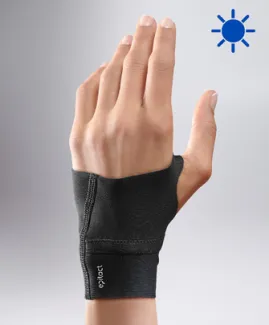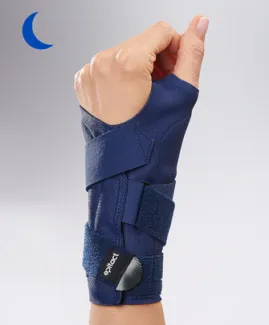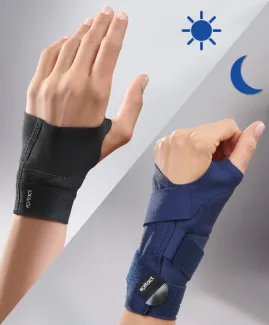
Do you feel pins and needles in your fingers? Do you have numbness and tingling in your hand and wrist? You might have carpal tunnel syndrome (CTS). EPITACT® tells you everything about it: what is carpal tunnel syndrome, how it happens and the role of the carpal tunnel.
What is carpal tunnel syndrome (CTS)?
The term ‘carpal’ is derived from the Greek Karpos, which means ‘wrist’. This could be surprising given that the symptoms of carpal tunnel syndrome are specially felt in the hand whereas the problems come from the wrist! More precisely, these problems affect the thumb, index, middle finger and half of the ring finger as well as the palm of the hand.
This is due to the compression of the median nerve in the carpal tunnel that passes through the wrist. This nerve is the one giving sensitivity to the aforementioned fingers. Then compressed, it doesn’t play its role properly and causes disabling disorders and pain.
Tingling, numbness, sensitivity disorders and decreased grip strength are some symptoms associated with this condition. These symptoms sometimes get mixed up with those of tendinitis, neurological syndrome or trauma.
To better understand what carpal tunnel syndrome is, let’s discover more details about the carpal tunnel and the median nerve.
What is the carpal tunnel?
The carpal tunnel is a narrow passage in the wrist. It is bounded by the wrist bones above and by the transverse carpal ligament below (on the internal side of the wrist). It is into this inelastic tunnel that the median nerve of the hand and the nine flexor tendons of the fingers pass.
To move a finger, flexor muscles and tendons activate thanks to electrical signals transmitted by the brain. These structures slide in a kind of sheath that is lubricated by synovial fluid in the carpal tunnel.
Focus on the median nerve and its numerous roles
The median nerve begins in the arm, continues in the elbow, in the forearm and then in the carpal tunnel. It ends on the tip of the 3 first fingers and half of the 4th and on the anterior side of the hand (the palm).
To better understand what carpal tunnel syndrome is, let’s discover the function of the median nerve:
• It transmits the signals from the brain to produce the wrist and fingers movements;
• It allows sensitivity in the thumb, forefinger, middle finger and part of the ring finger;
• It gives information to the brain: temperature, pain, touching, etc.
If the median nerve is compressed, the transmission of nerve impulse is less effective. As a result, sensations as well as the action of muscles and tendons are impaired.
Dysfunction of the median nerve when compressed in the carpal tunnel
Most people know what carpal tunnel syndrome is but ignore what is causing it. Indeed, a repetitive motion of the hand and wrist favours the dysfunctions linked with carpal tunnel syndrome. For example, extreme angular positions of the wrist highly compress the median nerve; in flexion against the flexor retinaculum, in extension against the carpal bones. This excessive pressure can cause intense pain and impact the functions of the median nerve.
The median nerve can also suffer from chronic compressions. This is often linked with an inflammation of the flexor muscles and tendons of the fingers or of their synovial sheath. As a consequence, it increases the size of tendons, which puts pressure on the median nerve.
Learn more about the causes and factors that lead to carpal tunnel syndrome.
What is the solution for carpal tunnel syndrome?
We’ve explained what carpal tunnel syndrome is and how it affects your hand. Simply put, it is pain, numbness, pins and needles in the area innervated by the median nerve. The carpal tunnel syndrome then involves adopting a neutral position in which the hand is aligned with the forearm. This contributes to making space in the carpal tunnel and then limiting the compression of the median nerve.
To help you do that, the rigid wrist brace CARP’IMMO™* by EPITACT® immobilises your wrist in this neutral position to reduce pain and allow the joint to rest.
As a complement to this night support, you can wear a flexible wrist brace during your activities. CARP’ACTIV™* works on the principles of proprioception (self-awareness of your movements). So with technical fabrics and a special design, it helps you correct intuitively the risky movements while preserving your range of motion!

*These solutions are class I medical devices that bear the CE marking under this regulation. Carefully read the instructions before use. Manufacturer: MILLET Innovation. 09/2021
 Pharmacie
Pharmacie

